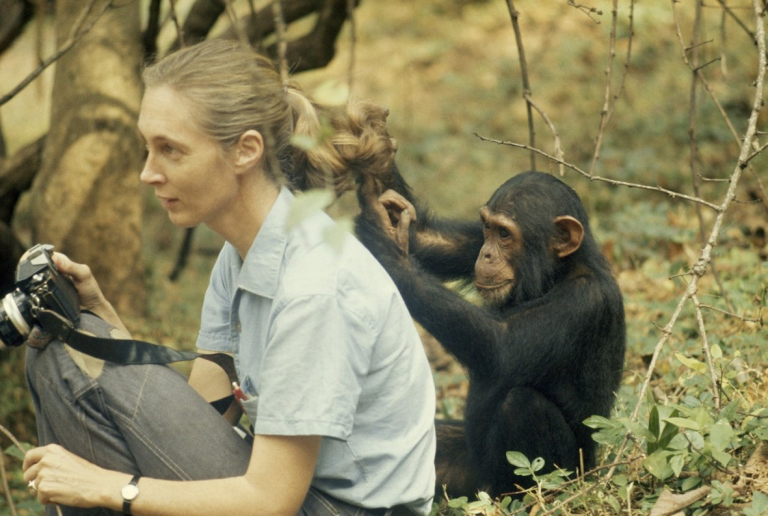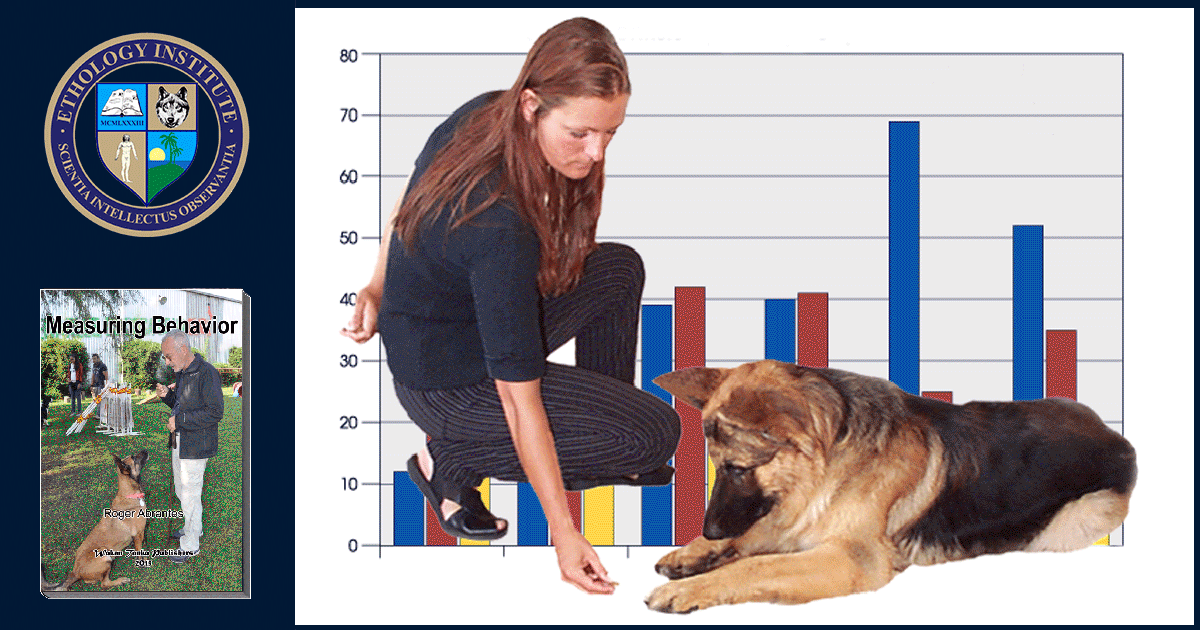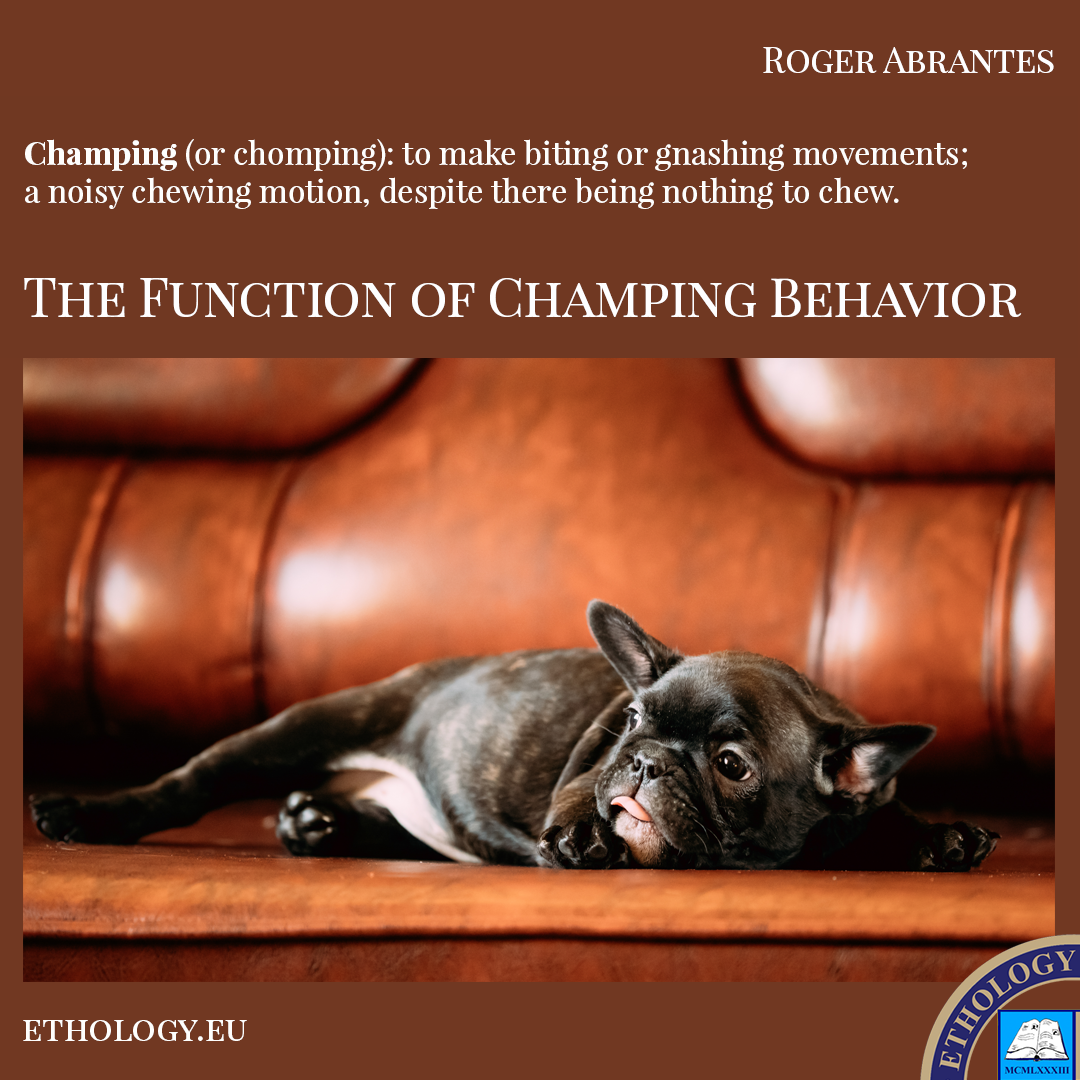Champing (or chomping) is a noisy chewing motion, despite there being nothing to chew. This behavior is associated with friendliness, pacifying of an opponent, insecurity, or submission, depending on degree and context.
There is a pacifying element in all forms of champing. Pacifying behavior (Latin pacificare, from pax = peace and facere, facio = to make) is all behavior with the function of decreasing or suppressing an opponent’s aggressive or dominant behavior or restoring a state of tranquility. Licking, nose poking, muzzle nudging, pawing, yawning, and twisting are common pacifying behaviors that dogs offer one another and us.
Champing is a behavior widely used by canines in situations ranging from mild unease to more severe concern.
Champing is one of the first sounds that puppies hear—their sibling’s suckling. It is, therefore, a sound associated with satisfaction. Redirection of the champing behavior assumes later a pacifying function—attempting to turn an unpleasant situation into a pleasant one. Initially, the pups connect champing with the appeasement of hunger.

Jane Goodall used to break a branch and pretend to chomp on it to pacify chimpanzees showing some unease (photo by Derek Bryceson/National Geographic Creative).
Champing is a straightforward and efficient way to show friendliness towards a dog. Curiously, this behavior appears to have a relaxing effect on most mammals. Newborn mammals suckle and connect sucking sounds (chomping) with pleasant and desirable consequences. Jane Goodall points out that she used to break a twig and pretend to champ it to pacify chimpanzees showing some unease. I often use chomping when in the presence of dogs and horses showing some degree of distress.
Featured image: Champing behavior has a pacifying function—attempting to turn an unpleasant situation into a pleasant one.
Featured Course of the Week
Measuring Behavior Measuring Behavior—Learn how to sample behavior, create ethograms, evaluate your results, and present your findings. Study how to measure changes in behavior such as frequency, intensity, duration, number of errors, speed, latency, and fluency.
Featured Price: € 168.00 € 98.00

Learn more in our course Ethology. Ethology studies the behavior of animals in their natural environment. This is a fundamental course for the serious student of animal behavior as well as animal trainers. Roger Abrantes wrote the textbook included in the online course as a beautiful flip page book. Learn ethology from a leading ethologist.


